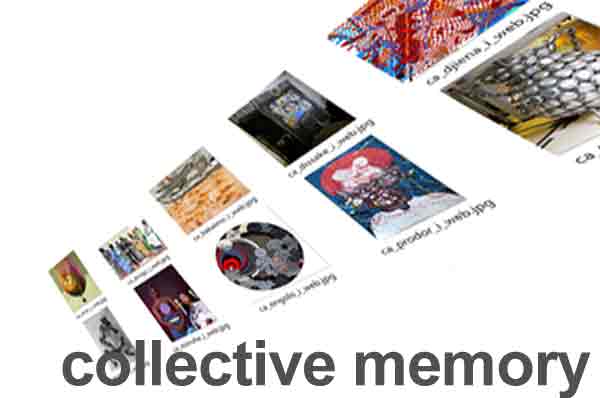THE 2022 COLLECTIVE MEMORY VIRTUAL EXHIBITION - AN INTRODUCTION
Over the years, the relevance of art exhibitions has progressed from being just the space for the meeting of art objects and audience, to a platform for learning and understanding human feelings and emotions from multidimensional perspectives. Besides its traditional reputation as an avenue for artists to showcase their unique creative capabilities, art exhibitions present a very reliable fora for people from diverse artistic backgrounds and cultures to make their voices heard, their feelings felt, and their opinions known on a wide range of issues. It is against this background that exhibitions have been given a major consideration in the workings of the Exploring Visual Cultures (EVC) project.
With the aim of contributing to global cohesion and the education of the global citizen, EVC has engaged image gathering and interpretation as a narratological stance. To a very large extent, the choice of this approach is justified by EVC’s multicultural membership, and has over the past few years put together a rich repertoire of images that seek to communicate and to engage history. Aggressive as they may sound in their thinking about the educational significance of images, it is not hard to observe that the fundamentals for forging interethnic and intercultural cohesion through images have already been established in the current ocular-centric societies. In the contemporary world, the assertion that we are visual creatures comes to everyone almost as a cliché, because we all find ourselves in a world where visual images inundate our lives on daily bases, and effective communication thrives on the dictates of visual rhetoric.
The Collective Memory Virtual Exhibition therefore was initiated upon thoughtful considerations of how visual rhetoric allows viewers to accurately identify how images communicate information. Collective memory, which refers to how communities of people remember their past, also shares through social experiences how memories of a group of people have been contributed to and changed over generations. Ideas of memory emanating from either national or community identity revolve around the ability to retrieve some idea of past experiences, events, objects etcetera that determine people’s history. Memory, like a living thing is fragile but helps to define and binds people, a group, or nation. It is the memory of the past that shapes the present and reshaped again by present perception.
The exhibition focuses on how young people envision their identities in their respective countries: what mental images do they collectively have about their life experiences. Thus, this project seeks to present collective memories from different parts of the world in an exhibition that will promote visual culture. It explores the way in which parts of the world presents themselves within a contemporary space.
This exhibition therefore aims at giving the younger generation an edge in the visualization and narration of their understanding of the past through various means of artistic expressions. The expectation is that, these students’ works, created and exhibited from a wide and divergent cultural experience would provide some sort of emotional templates and indicators for the understanding of other cultures. This would go a long way to affect cultural perceptions through knowledge enhancement on the converging and diverging possibilities of different cultures.

